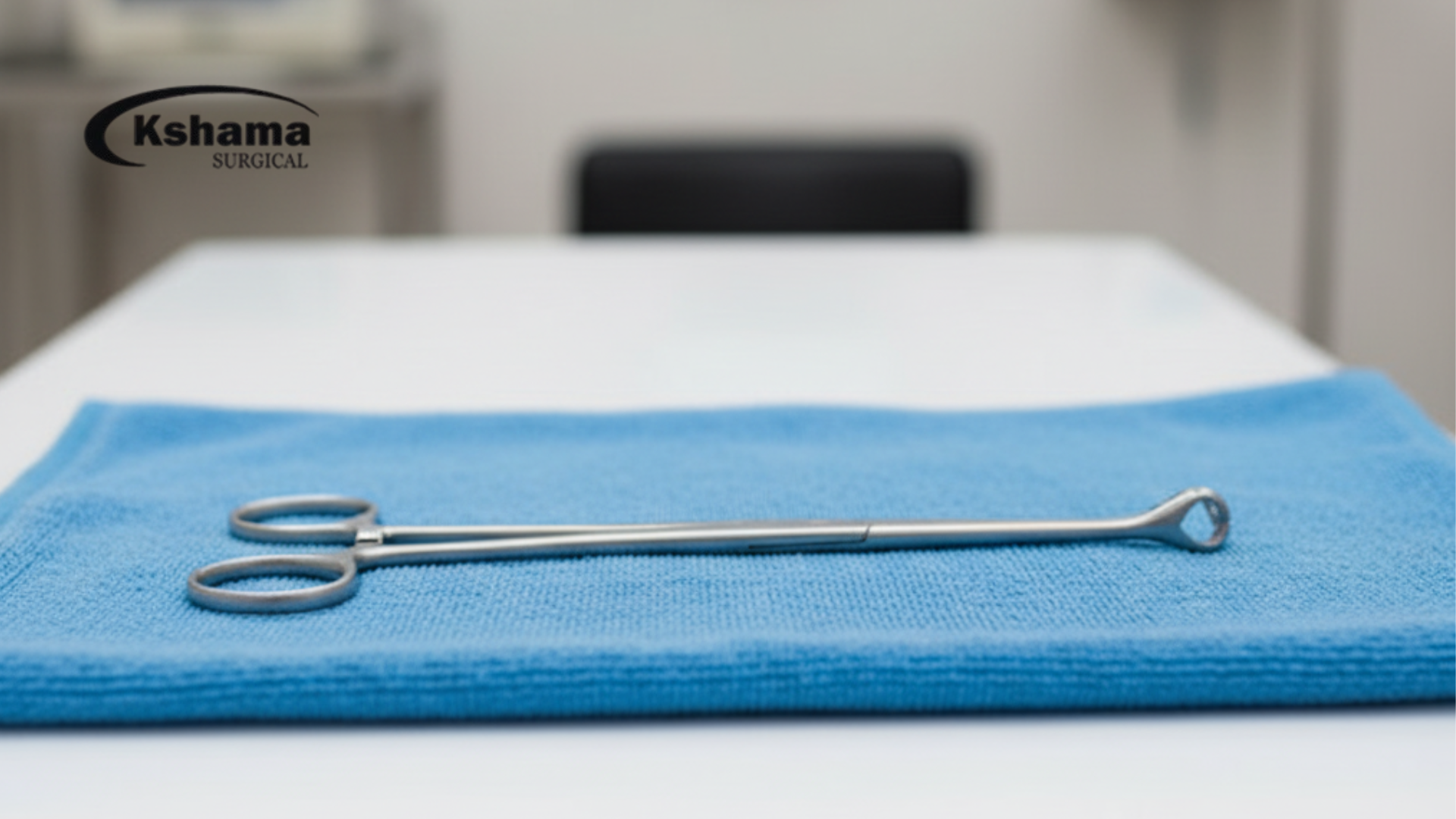Introduction
When it comes to surgery, tools are everything. One small mistake in tools can create big problems in operation. Among the many surgical instruments, one tool that stand out for gentle tissue handling is the babcock forceps. Doctors, nurses, and even veterinary surgeons use it every single day. At first, it looks like just another type of forceps, but when you see how it hold soft tissue without crushing, you realise why it’s so important. In this blog we gonna talk about what it is, how it looks, where it is used, and why so many hospitals and clinics keep them ready always.
What is this instrument?
It is a surgical tool made with stainless steel, looks like a scissor but without sharp blade.
Instead of cutting, it has smooth rounded tips. Soft organs such as the appendix, fallopian tubes, or intestines can be safely stored in this form. Unlike other forceps that may have teeth or sharp ends, Babcock forceps are designed to be gentle. Surgeons choose them because of this when working with delicate tissues.
History of Babcock Forceps
These forceps were named after Dr. William Wayne Babcock, who created them long back. Before his design, surgeons often damaged tissues while holding them. His design solved this by making a grip that spread pressure evenly. This small innovation made big change in surgeries, and today babcock is counted as must-have in operation theatres.
Where are they used?
Surgeons use them in many procedures. Some common areas are:
- Abdominal surgery – for holding intestine or appendix.
- Gynecology surgery – for fallopian tubes or ovaries.
- Urology – for bladder or delicate tissues.
- Veterinary care – for soft organs in animals, part of Veterinary Surgical Instruments set.
It’s amazing how one tool can be so helpful in both human and animal operations.
Design and Features
If you hold a pair of babcock forceps, you will notice few things:
- Long handles like scissors for easy grip.
- Ratchet lock to hold tissue without continuous pressure from hand.
- Rounded tip with fenestrated (open window) design that spread pressure on tissue.
- Made in different sizes so doctors choose based on type of surgery.
The design look simple, but it’s smart because it protect tissue while still giving surgeon control.
Why Babcock Forceps are So Important?
One might ask, why not just use any normal forceps? Answer is simple – safety of tissue. Some tissue like intestines or tubes are very delicate, they can tear easily. If that happen, surgery become more complex and risky. The babcock forceps make sure tissue is held secure but not injured. It balance between grip and gentleness, and that is reason why every surgical kit got one.
Babcock Forceps in Veterinary Surgeries
Doctors for animals also use this instrument a lot. In veterinary operations, intestines and reproductive organs of animals need same delicate handling. That’s why babcock is part of Veterinary Surgical Instruments worldwide. Whether it is small pets like dogs and cats, or bigger animals like cattle, this tool help vets perform safe surgeries without damaging fragile tissue.
Care and Maintenance
Like any surgical tool, the babcock forceps also need proper cleaning and care. After each use they are sterilized, usually by autoclave. Stainless steel makes them rust-free, but still they need drying and handling carefully. If not cleaned right, they can lose smooth working or even become unsafe for patient. Hospitals usually keep a stock of them so that clean ones always available.
How to Choose the Right Babcock Forceps?
If you are buying for hospital, clinic or veterinary setup, keep these points in mind:
- Always pick high grade stainless steel.
- Check smooth lock system and easy finger rings.
- Make sure the tips align properly without gap.
- Choose size based on type of surgeries done.
Cheap quality ones may look fine outside but they don’t last, and in surgery reliability is everything.
Common Mistakes When Using Babcock Forceps
Sometimes beginners or students make mistake with this instrument. Some examples are:
- Holding tissue too tight, thinking it will slip otherwise.
- Using it for tissues that don’t need such care.
- Not locking properly which cause tissue to slip in middle of surgery.
Training and practice is must to use it right. Experienced surgeons always know how much pressure to apply.
Emotional Side of Surgical Tools
We talk a lot about design and function, but in real operation theatre, surgeons trust their tools like family. A pair of babcock forceps might look like cold metal to normal person, but for a surgeon it is helping hand. Every successful surgery builds confidence, and instruments like this play big role in saving lives quietly.
FAQs
What are babcock forceps mainly used for?
They are used for holding delicate tissues like intestines, fallopian tubes, appendix, or other soft organs during surgery. They hold without crushing or damaging.
Can they be used in veterinary surgeries?
Yes, they are part of Veterinary Surgical Instruments and very useful in animal operations where fragile organs need careful handling.
How are they different from other forceps?
Unlike toothed or sharp forceps, these have smooth rounded tips with fenestration. This design allows secure grip but spreads pressure, preventing tissue injury.
Are they reusable or single-use?
Mostly they are reusable and made from stainless steel. They are sterilized after every procedure. Some disposable versions also exist but not very common.
What size should be chosen?
Sizes vary, from small ones for pediatric or delicate surgeries to larger ones for abdominal operations. Choice depends on what type of surgeries the hospital or clinic do most.
Conclusion
The babcock forceps may look like just another pair of metal scissors, but for delicate surgeries they are lifesaver. From human abdominal operations to veterinary care, this tool prove its value again and again. Proper care, right training, and good quality material make them last for years. In the end, such simple looking instrument actually plays giant role in saving lives.




